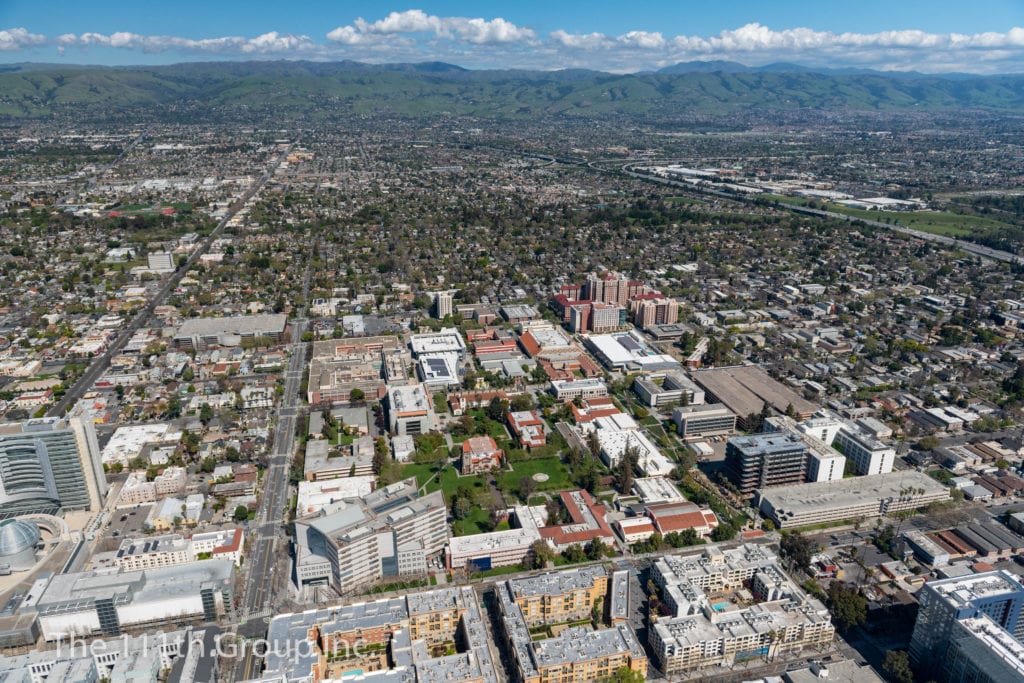Students are coming back to campus at San Jose State University this fall, and they may bring the city’s economic recovery with them.
A recent study shows the university, prior to the pandemic, generated $776 million in economic output annually for San Jose and $2.4 billion for the Bay Area. That disappeared with the onset of the pandemic and the closure of most in-person functions.
The study, commissioned by the university and performed by Los Angeles-based research firm Beacon Economics, also calculated that the university’s economic impact balloons to $4.1 billion when considering its statewide reach.
The school’s student body totals more than 36,000 individuals, and the university employs more than 3,500 workers. When fully occupied, the school’s dorms house more than 4,200 students, with thousands more living nearby. All that means more spending locally.
Small businesses lost millions of dollars during the pandemic, with many filing for bankruptcy and shutting down completely. According to county numbers released in February, 2,600 restaurants temporarily shuttered across Santa Clara County, while an additional 1,000 closed permanently.
Businesses located in downtown San Jose were no exception.
Randy Musterer, owner of the restaurant Sushi Confidential, just minutes away from the heart of the university campus, said not only does he miss the student clientele, but students also provide a huge part of his workforce, too. Without them, it’s been even more difficult to hire enough staff to stay open.
“We’re definitely feeling the effect of not having students around,” Musterer told San José Spotlight. “Right now it’s extremely difficult to get employees, and a large portion of our employees were from San Jose State.”
The majority of students are on summer break, but thousands will flood the city this August for the beginning of the academic year.
“We’re looking forward to August and September when the students come back and we’ll be trying to hire more staff so we can stay open later,” Musterer said. His restaurant closes an hour or two earlier every night than it did before the pandemic. “And in turn, (we’re looking forward) to having all of the students come and support all of the local businesses.”
But it’s not just the hiring pool—it’s the atmosphere students bring, too.
“They bring a fun, lively energetic environment and culture,” Musterer said. “They also contribute diversity in downtown … those are all the things that are missing right now.”


University President Mary Papazian made a similar point in a June blog post.
“Our local businesses thrive, our arts districts crackle, and our civic pride swells, all due to the tens of thousands of students, staff, faculty members and other university supporters and stakeholders who populate and visit our campus,” Papazian wrote.
The findings were presented to the San Jose City Council in June in a downtown progress report as “positive news” for the city and especially downtown.
Sales tax revenue across the city decreased about 20% during the pandemic, but downtown was hit even harder, losing approximately 50% of its sales tax revenue, said Blage Zelalich, downtown manager for the city.
The decrease is tied to the loss of conventions, downtown office workers, visitors and tourists, as well as the university. But the impact of having 36,000 students and nearly 4,000 faculty downtown, versus not having them, is enormous.
“San Jose State has a significant impact on downtown,” Zelalich said. “We’re super lucky to have a university that’s as large (as it is)… We’re lucky to have this urban university where there is a huge commitment between university leadership and the San Jose leadership to continue to … work more closely than in the past.”
Zelalich said the city is collaborating with the university in August to create “welcome week” events for students returning to campus or arriving for the first time.
“(It’s) so students know that downtown is their neighborhood, as well, and also so they can get to know some of the businesses that they haven’t been experiencing for the last year or so,” Zelalich said.
It’s unclear how big of a boom the fall will bring—students are required to be fully vaccinated before stepping on campus. And while freshmen students are normally required to live on campus in the school’s residence halls, it’s unclear when that requirement will be reinstated.
“The requirement was suspended last year and will also be suspended this upcoming year,” Kenneth Mashinchi, spokesperson for the university, told San José Spotlight. “A decision hasn’t been made yet about reinstating the requirement for Fall 2022.”
Student spending accounted for one-third of the university’s local economic input, the study found. The school also indirectly supports almost 1,300 additional jobs across the city with its economic activity, including within hospitality, grocery stores, entertainment, recreation and personal shopping.
A bustling university also supports the local government through tax revenue.
SJSU-related spending produced more than $606 million in state, local and federal tax revenue in 2018-19. Sales tax alone—generated by student, staff and visitor spending, mostly in the downtown core—produced $89.7 million of that, or about $14.8% of all university-related tax dollars.”
“Cities matter, we know, because they provide such fertile ground for creativity, art, innovative thinking and the exchange of ideas and cultures that leads to positive transformation,” Papazian wrote in her blog post. “Every great urban university—including San Jose State—needs to have a great city surrounding it, and we are delighted to be part of the great city that is San Jose to help us all reach our collective goals.”
Contact Madelyn Reese at [email protected] or follow @MadelynGReese on Twitter.


Leave a Reply
You must be logged in to post a comment.